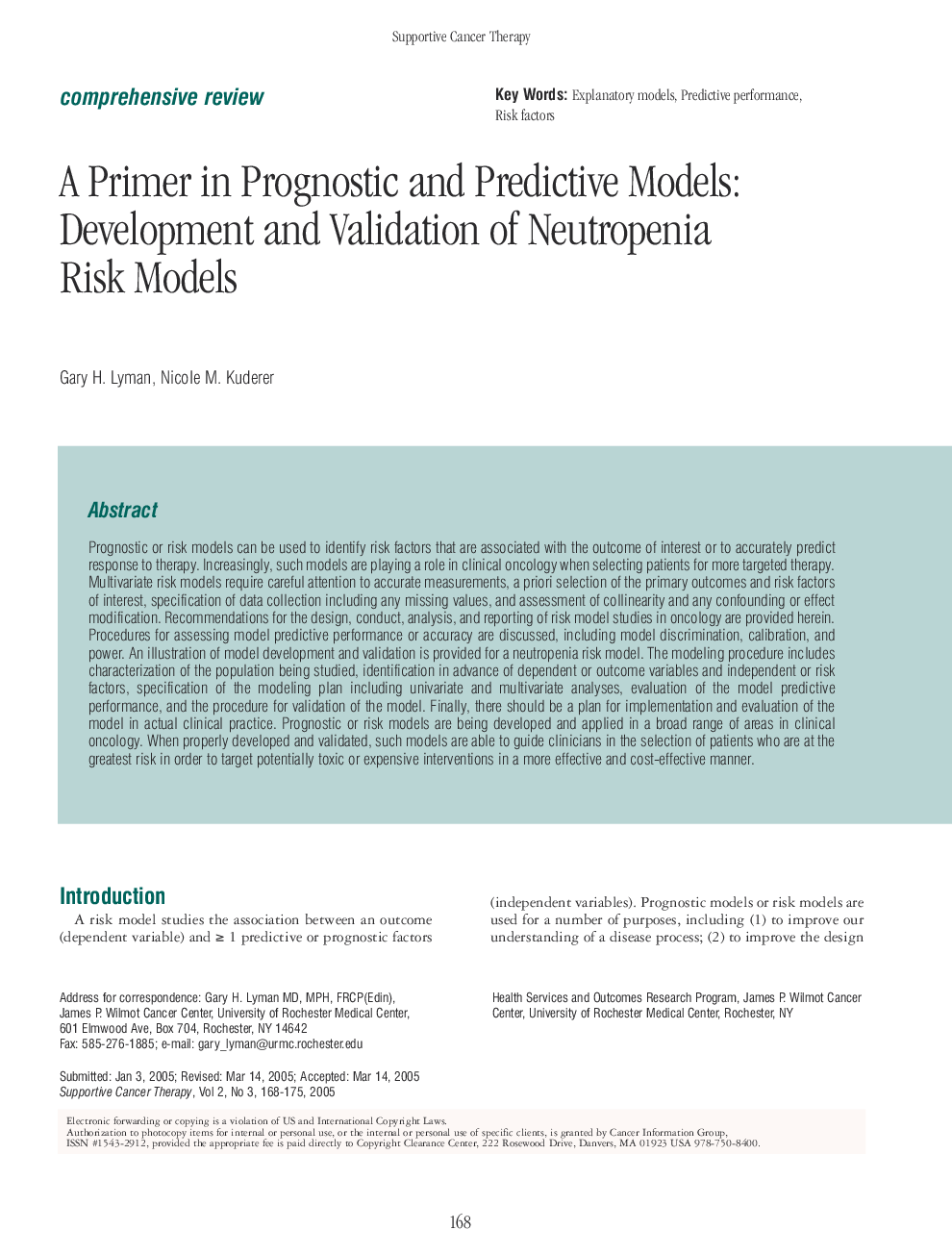| Article ID | Journal | Published Year | Pages | File Type |
|---|---|---|---|---|
| 9340501 | Supportive Cancer Therapy | 2005 | 8 Pages |
Abstract
Prognostic or risk models can be used to identify risk factors that are associated with the outcome of interest or to accurately predict response to therapy. Increasingly, such models are playing a role in clinical oncology when selecting patients for more targeted therapy. Multivariate risk models require careful attention to accurate measurements, a priori selection of the primary outcomes and risk factors of interest, specification of data collection including any missing values, and assessment of collinearity and any confounding or effect modification. Recommendations for the design, conduct, analysis, and reporting of risk model studies in oncology are provided herein. Procedures for assessing model predictive performance or accuracy are discussed, including model discrimination, calibration, and power. An illustration of model development and validation is provided for a neutropenia risk model. The modeling procedure includes characterization of the population being studied, identification in advance of dependent or outcome variables and independent or risk factors, specification of the modeling plan including univariate and multivariate analyses, evaluation of the model predictive performance, and the procedure for validation of the model. Finally, there should be a plan for implementation and evaluation of the model in actual clinical practice. Prognostic or risk models are being developed and applied in a broad range of areas in clinical oncology. When properly developed and validated, such models are able to guide clinicians in the selection of patients who are at the greatest risk in order to target potentially toxic or expensive interventions in a more effective and cost-effective manner.
Related Topics
Health Sciences
Medicine and Dentistry
Oncology
Authors
Gary H. Lyman, Nicole M. Kuderer,
